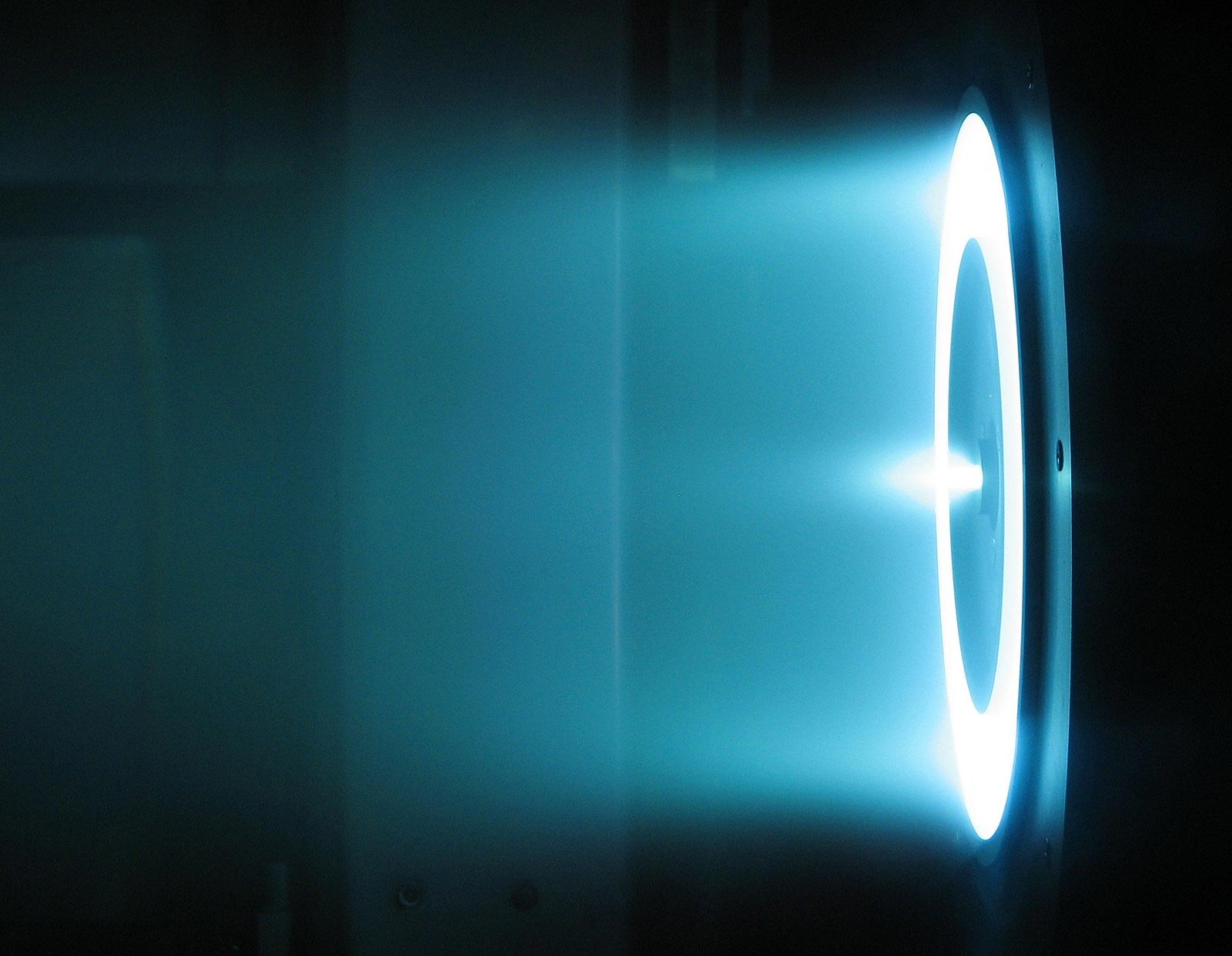
En Hall Effect thruster med solenergi som blir testet under vakuumforhold hos NASA. Kreditt: NASA
Plasmabasert rakett designet for dypt romutforskning varer lenger og genererer høy kraft.
Den økte interessen for romfart har nødvendiggjort utviklingen av kraftige, langvarige rakettsystemer for å drive romfartøyer inn i kosmos. Forskere ved det amerikanske energidepartementets (DOE) Princeton Plasma Physics Laboratory ([{” attribute=””>PPPL) have created a small modified version of a
The plasma-powered miniature device is less than an inch in diameter and removes the walls surrounding the plasma propellant to create innovative thruster configurations. Plasma is a state of matter composed of free-floating electrons and atomic nuclei, or ions. Among these innovations are the cylindrical Hall thruster, which was initially conceived and researched at PPPL, and a completely wall-less Hall thruster. Both configurations decrease channel erosion generated by plasma-wall interactions, which limits thruster lifespan – a major issue for typical annular or ring-shaped Hall thrusters and particularly for miniaturized low-power thrusters used on small satellites.
Widely studied
Cylindrical Hall thrusters were invented by PPPL physicists Yevgeny Raitses and Nat Fisch in 1999 and have been studied with students on the Laboratory’s Hall Thruster Experiment (HTX) since then. The PPPL devices have also been studied in countries including Korea, Japan, China, Singapore, and the European Union, with Korea and Singapore considering plans to fly them.
While wall-less Hall thrusters can minimize channel erosion, they face the problem of extensive widening, or divergence, of the plasma thrust plume, which degrades the system’s performance. To reduce this problem, PPPL has installed a key innovation on its new wall-less system in the form of a segmented electrode, a concentrically joined carrier of current. This innovation not only reduces the divergence and helps to intensify the rocket thrust, Raitses said, but also, suppresses the hiccups of small-size Hall thruster plasmas that interrupt the smooth delivery of power.

Graduate student Jacob Simmonds, center, with advisors Masaaki Yamada, left, and Yevgeny Raitses with figure of wall-less Hall thruster behind them. Credit: Yamada and Raitses photos by Elle Starkman/Office of Communications; Simmonds photo by Tyler Boothe. Collage by Kiran Sudarsanan.
The new findings cap a series of papers that Jacob Simmonds, a graduate student in the
The segmented electrode diverts some electric current away from the thruster’s high-voltage standard electrode to shape the plasma and narrow and improve the focus of the plume. The electrode creates this effect by changing the directions of the forces within the plasma, particularly those on the ionized xenon plasma that the system accelerates to propel the rocket. Ionization turned the xenon gas the process used into free-standing electrons and atomic nuclei, or ions.
These developments increased the density of the thrust by shaping more of it in a reduced volume, a key goal for Hall thrusters. An added benefit of the segmented electrode has been the reduction of plasma instabilities called breathing mode oscillations, “where the amount of plasma increases and decreases periodically as the ionization rate changes with time” Simmonds said. Surprisingly, he added, the segmented electrode caused these oscillations to go away. “Segmented electrodes are very useful for Hall thrusters for these reasons,” he said.
The new high-thrust-density rocket can be especially beneficial for tiny cubic satellites, or CubeSats. Masaaki Yamada, Simmonds’ co-doctoral adviser who heads the Magnetic Reconnection Experiment (MRX) that studies the process behind solar flares, Northern lights and other space phenomena, proposed the use of a wall-less segmented electrode system to power a CubeSat. Simmonds and his team of undergraduate students working under the guidance of Prof. Daniel Marlow, the Evans Crawford 1911 Professor of Physics at Princeton, took up that proposal to develop a CubeSat and such a rocket — a project that was halted near completion by the DOI: 10.1063/5.0070307
Support for this work comes from the DOE Office of Science.
PPPL, on Princeton University’s Forrestal Campus in Plainsboro, N.J., is devoted to creating new knowledge about the physics of plasmas — ultra-hot, charged gases — and to developing practical solutions for the creation of fusion energy.